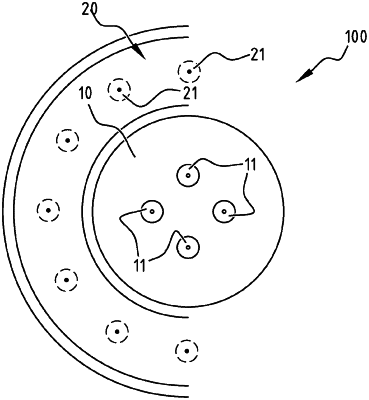| CPC B41N 1/12 (2013.01) [B41C 1/00 (2013.01); B41C 1/05 (2013.01); B41F 5/24 (2013.01); B41M 1/04 (2013.01); B41N 3/00 (2013.01); H04N 1/405 (2013.01); H04N 1/4055 (2013.01); B41N 1/22 (2013.01); G03F 7/20 (2013.01)] | 16 Claims |

|
1. A method for generating a plate layout for making a flexographic printing plate, said plate layout representing an image comprising solid image areas and halftone image areas, said method comprising:
providing a computer,
the computer receiving digital values representing point by point the image to be printed; and
the computer generating a plate layout in which the digital values have been converted into binary data allowing to form the halftone image areas and the solid image areas, wherein for the halftone image areas, at least a tile associated with a halftone dot is calculated, said tile containing a plurality of pixels arrayed in two dimensions; wherein the tile is calculated such that it contains a central portion with a first pattern of a plurality of pins; the plurality of pins being represented by a binary value different from the rest of the central portion; and a surrounding portion comprising a second pattern of a plurality of recesses; the plurality of recesses being represented by a binary value different from the rest of the surrounding portion; wherein the first pattern and second pattern are such that the surrounding portion can be distinguished from the central portion.
|